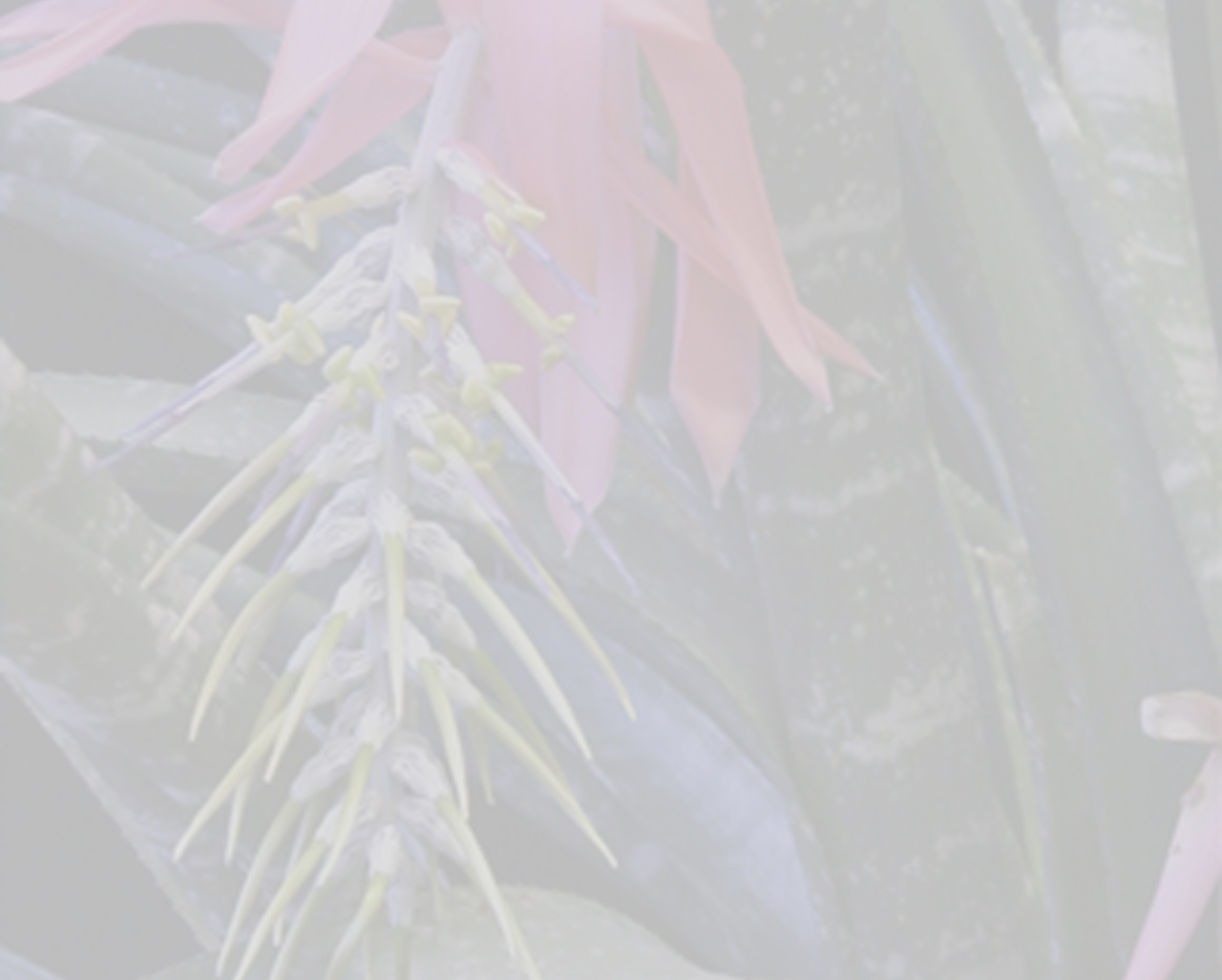



plant stemless, probably with stolons, flowering (including inflorescence) to 40 cm high, leaves somewhat numerous, forming a funnel shaped rosette to 30 cm high, the outside leaves narrow lineal, the inner ones tongue-like. leaves: sheath distinct, to 12 cm long, 4.5 cm wide, outside blue-violet, the bottom white, inside gren, the edges smooth, both sides lepidote; blade erect to bent over, to 11 cm long, 4.5 cm wide, broadly rounded but with a rolled back tip, the edges with strong teeth, both sides banded, the inner ones white flecked to clear white portions. inflorescence: peduncle erect to bent over, to 25 cm long, 0.5 cm thick, green, glabrous, round; peduncle bracts narrow lanceolate, acuminate, the bottom ones a pink colour, thin, outside glabrous, inside lepidote, the upper ones cinnabar red, abruptly changing into the very small floral bracts; fertile part simple to once-branched, (the base has a 2–3 flowered side spike) flower sub-sessile, sticking out horizontally, 66–6.5 cm long, rachis thin, almost straight, reddish green with a reddish top, sepal weakly asymmetric, narrow-linear, to 2.5 cm long, 0.5 cm wide, the tip emarginate, with a prickle tip, dark blue, glabrous, laater cinnabar red, petal narrow-linear, to 4.5 cm long, 4 mm wide, the bent back tip a cornflower blue, later reddish, the bottom white, with 2 horn like slitted at the top ligules. stamens erect, straight, shorter than the petal, but visible at anthesis, with white filaments. pistil: style as long as the anther, with long, cornflower blue, weakly spreading lobes; epigynous tube distinct, 3 mm long, ovary sessile, round, edged, 1.5 cm long, pre-floral and at anthesis carmine red, after flowering reddish grey, glabrous, bent, frosted waxy.Edited from (02-08-2014): Rauh 1988a. Bromelienstudien (Mitteilung 20). I. Neue und wenig bekannte Arten aus Peru und anderen Lšndern .